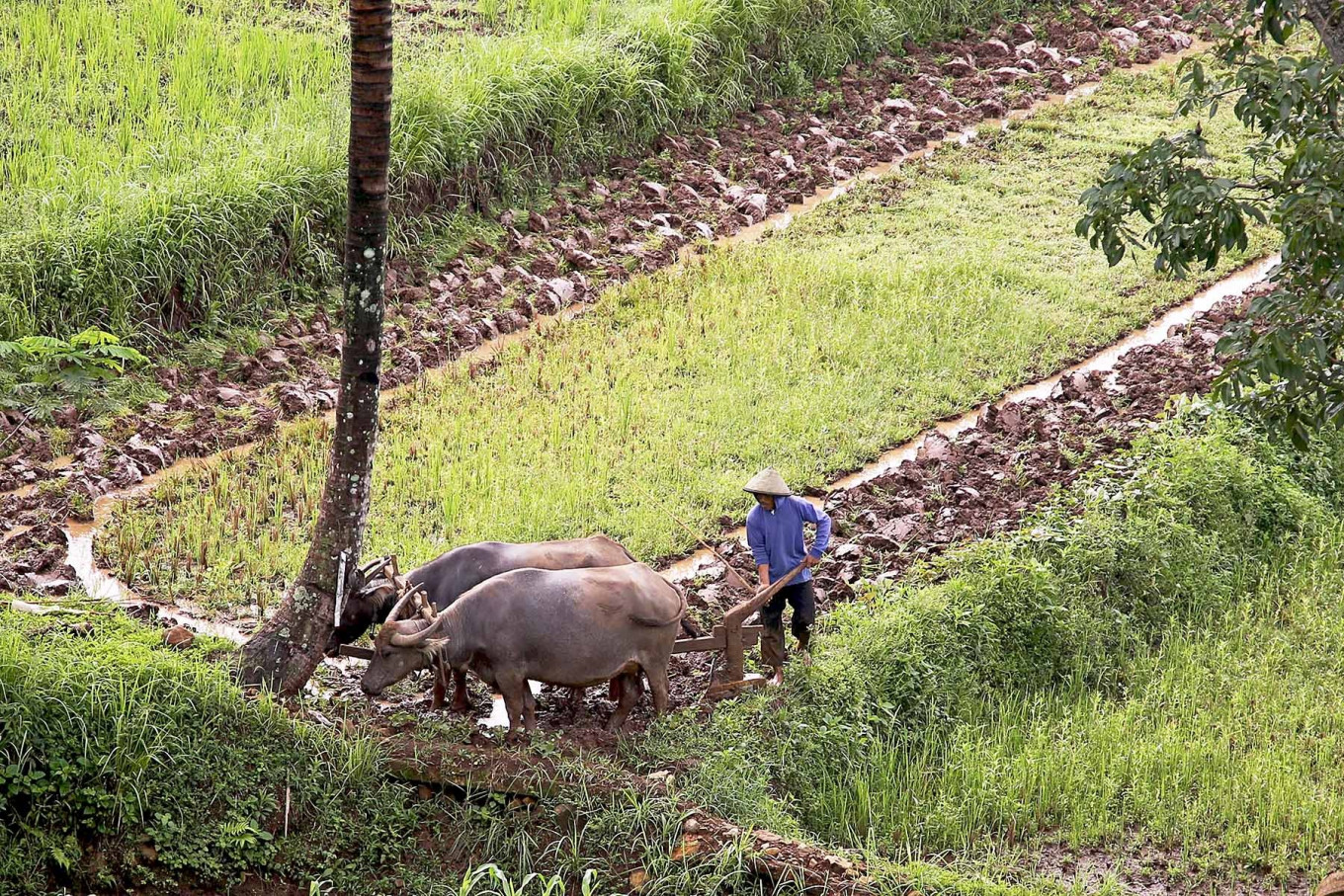Popular Reads
Top Results
Can't find what you're looking for?
View all search resultsPopular Reads
Top Results
Can't find what you're looking for?
View all search resultsRI's rice reserve not sufficient to weather El Niño next year
Authorities and experts assure that the Indonesian rice reserve will last until the end of the year despite potential global inflation resulting from India’s export bans and El Niño, the latter of which will affect next year’s stock.
Change text size
Gift Premium Articles
to Anyone
I
ndonesia may face challenges in keeping a sufficient rice supply next year as the country struggles to maintain stocks because of challenges caused by El Niño and export curbs from other rice-producing countries.
The United Nation’s World Meteorological Organization declared El Niño was already under way with a 90-percent chance that it would continue during the second half of this year. Consequentially, the hot, dry weather that El Niño causes is expected to threaten food production across Asia.
Meanwhile, Indonesia’s Meteorology, Climatology and Geophysics Agency (BMKG) forecasts that El Niño will peak in August and September, with weak to moderate intensity in the country.
“God willing, our rice stock will not be affected,” National Food Agency (NFA) head Arief Prasetyo Adi told The Jakarta Post on Tuesday.
Read also: UN warns world to prepare for El Nino impact
He mentioned that President Joko “Jokowi” Widodo has instructed related ministries and the NFA to plan early to brace for the peak of El Niño.
The government has decided to import up to 2 million tonnes of rice this year to increase the government rice reserves (CBP). The State Logistics Agency (Bulog) said on July 19 it only held around 750,000 tonnes in reserves, far below the safe threshold of 1.2 million tonnes.
According to Arief, the imported rice will be coming from Thailand and Vietnam and if it does not meet the demand, the Trade Ministry has pocketed a deal with India to procure 1 million tonnes when the CBP runs low.
The price of rice in Indonesia cold increase because of the psychological effects caused by a depleting CBP, in which case the government can intervene through market operations.
According to Statistics Indonesia, rice is also the largest contributor to inflation among commodities assessed.
Indonesian Political Economy Association (AEPI) agriculture expert Khudori warned that the current CBP figure may not be sufficient considering the scale of market operations the government held in the past.
In the past four months, the government only released between 25,000 and 30,000 tonnes of rice a month, down from between 150,000 and 200,000 tonnes in this first quarter, he said.
“In August to December 2022, the market operations could release 200,000 tonnes per month,” he told the Post on Wednesday.
Furthermore, the government plans to disburse 630,000 tonnes of rice as part of a social assistance program to some 21 million households by the end of the year, which adds pressure to the CBP.
Sutarto Alimoeso, chairman of the Association of Indonesian Rice Mills and Rice Entrepreneurs (Perpadi) told the Post on Tuesday that the country also faces problems with speculators and middlemen, who may disrupt this year’s rice milling.
In most cases, Indonesian rice farmers do not sell their rice directly to mills for various reasons, such as logistic difficulties and distance. Instead, they sell it to middlemen, known as tengkulak, who then sell it to millers.
“I got reports that after the issues of El Niño and depleting Bulog stocks surfaced, the middlemen started selling the grains to the millers at higher prices,” Sutarto said, adding that the speculation is evidenced by a sluggish farmgate price despite millers’ price hikes.
A fertilizer shortage also affected production in this year’s second harvest, he said, adding that the situation has been exacerbated by the war in Ukraine.
“For this year, the bigger problem is productivity, not El Niño. June to August is supposed to be a good harvest season, if only fertilizer [supply] was good,” Sutarto said.
Disrupted productivity this year would pose as a big problem for 2024, because the stock at the start of each year is essentially whatever is left over from the previous one, Sutarto added.
Dwi Andreas Santosa, who chairs the Indonesian Farmers Seed Bank and Technology Association, warned on June 12 that he projected El Niño may cause Indonesian rice production to drop by 5 percent from this year’s target unless the government could ensure sufficient water supply, as quoted by Bisnis.com.
AEPI’s Khudori said that given these challenges, Bulog will need to import rice to beef up its CBP reserves.
However, at the same time, global rice producers have started to restrict exports to anchor their own food security.
Vietnam has announced a plan to gradually decrease its rice export from 7.1 million tonnes this year to just 4 million by 2030.
Read also: Top rice supplier India bans some exports
India, which accounts for more than 40 percent of global rice exports, announced on July 20 that it would ban exports of non-basmati white rice to ensure domestic availability.
However, Perpadi’s Sutarto said his Indian counterpart told him that this export ban can still be circumnavigated through “government-to-government” relationships.
Alternatively, Indonesia could turn to other rice-exporting countries like Thailand or Pakistan, as was done last year.










